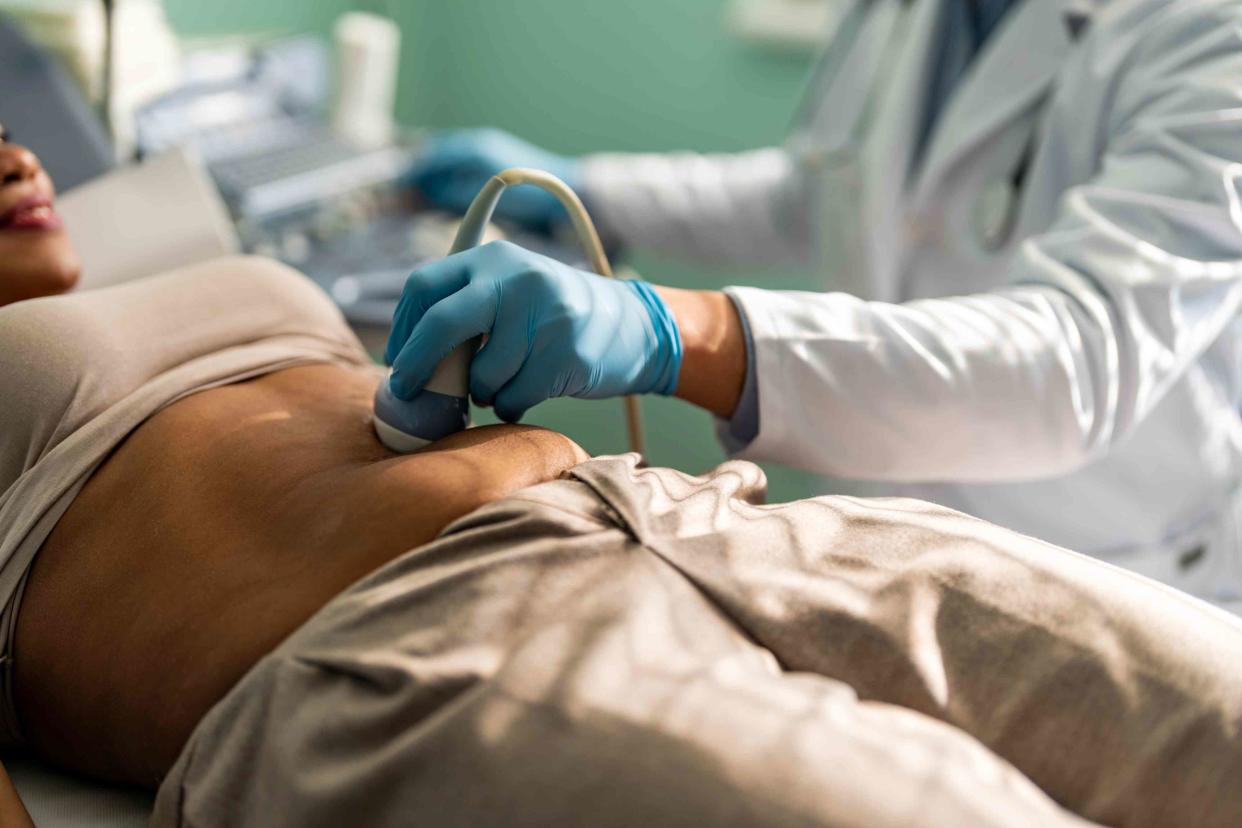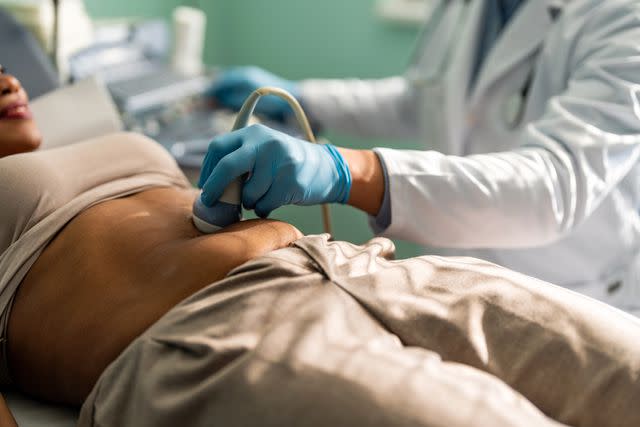Complications of an Endometriosis Cyst (Endometrioma)

ljubaphoto / Getty Images
Medically reviewed by Peter Weiss, MD
Endometriosis cysts (endometrioma) occur when sacs filled with endometrial-like tissue form in the ovaries.
These cysts form during advanced stages of endometriosis and can cause severe pain and, in rare cases, rupture. Laparoscopic procedures are the most effective way to diagnose and treat endometriosis cysts.
This article discusses the symptoms, diagnosis, and treatment of endometriosis cysts.

ljubaphoto / Getty Images
What Is an Endometriosis Cyst?
Endometriosis cysts are lesions that occur in the ovaries due to endometriosis. Endometriosis cysts form at more severe stages of endometriosis and are sometimes called chocolate cysts because they are filled with dark brown endometrial fluid that can resemble chocolate.
Endometriosis cysts differ from functional ovarian cysts, which occur in healthy people without endometriosis during menstrual cycles. Unlike endometriosis cysts, functional ovarian cysts are harmless and usually disappear after a few months.
Symptoms of Endometriosis Cyst Pain
Endometriosis cysts can cause severe pain that typically occurs on the side of the body where the lesion is located. Symptoms include:
Pelvic pain
Back pain
Painful sexual intercourse (dyspareunia)
Painful defecation (dyschezia)
Painful urination (dysuria)
Can Endometriosis Cysts Rupture?
While endometriosis cysts can rupture, it is rare and estimated to occur in less than 3% of people of reproductive age. Cyst rupture is more common during pregnancy due to the hormonal stimulation of the cyst's endometrial-like tissues.
A ruptured endometriosis cyst can be a medical emergency. Seek immediate care if you experience severe abdominal pain that occurs with:
Heavy vaginal bleeding
Feeling faint or dizzy
Endometriosis Cysts Formation
It is not known why endometriosis cysts form. The most common theory is that endometrial tissue flows backward during menstruation (called retrograde menstruation) and attaches to an ovary. Because endometrial tissue is hormonally active, the lesion can bleed during menstruation, forming a sticky adhesion that eventually becomes an endometriosis cyst.
How Do You Treat an Endometriosis Cyst?
Endometriosis cysts seriously threaten a woman's future reproduction because they can destroy healthy ovarian tissue and decrease ovary function. The cysts typically respond poorly to management with medication or continued observation with ultrasound imaging.
Though mild endometriosis can be treated with hormone therapy such as birth control pills, once endometriosis is severe enough to cause endometriosis cysts, these treatments are usually ineffective, and surgery is the preferred treatment.
Conservative surgeries, including partial or total cyst removal (cystectomy) or laser ablation using a laser beam to destroy the cyst, are usually very effective in relieving symptoms. Oophorectomy (complete ovary removal) should not be an option in women of reproductive age with endometriosis cysts.
Testing to Diagnose Endometriosis Chocolate Cysts
Ultrasound imaging is often used to detect the presence of ovarian cysts, but if cysts are found, these images usually will not indicate the type of cyst.
Laparoscopic surgery, where surgical instruments are inserted through small incisions in the abdomen, is considered the best way to diagnose and remove endometriosis cysts.
Endometriosis Cyst Removal During Laparoscopy
Laparoscopic removal of endometriosis cysts (cystectomy) is the first-line conservative treatment. In addition, it is the preferred treatment if cysts are larger than 4 centimeters to reduce pain and improve fertility.
During the procedure, surgical instruments are inserted in the abdomen, allowing surgeons to inspect the pelvic area and remove part or all of the cyst. Smaller endometriosis cysts can also be removed, or laser ablated during laparoscopic procedures.
Laparoscopy involves less pain and quicker recovery time than open surgery, with most people going home the same day as the procedure. In addition, when performed with accurate surgical techniques, endometriosis cyst removal using laparoscopy will not result in significant removal of ovarian tissue or loss of ovary function.
Endometriosis Cysts and Cancer Risk
Endometriosis cysts have a twofold to threefold increased risk of transforming into ovarian cancer, but they do not increase the risk of developing other types of cancer. Although it’s unknown why endometriosis cysts can become cancerous, genetics, inflammation, and hormones are believed to play a role. During laparoscopic procedures, a sample of the cyst can be removed for a biopsy to test for cancer if the disease is suspected.
Medications to Manage Endometriosis Cyst Pain
Over-the-counter (OTC) medications, such as Aleve (naproxen), Tylenol (acetaminophen), and Advil or Motrin (ibuprofen), can help relieve pain temporarily, but do not provide long-term symptom relief.
Do Endometriosis Cysts Come Back?
While endometriosis cysts can return, methods to suppress ovulation or reduce retrograde menstruation, such as hormonal contraceptives, can lower the risk of cysts returning.
Although laparoscopic procedures are effective at removing endometriosis cysts, if the cyst is not sufficiently removed during the surgery, the risk of the cyst returning is high.
Self-Care for Endometriosis Cyst Discomfort
At-home treatments may reduce discomfort from endometriosis cysts. Heat therapy using a heating pad or hot water bottle will increase blood flow, reduce muscle soreness, and may be as effective as pain medications in reducing symptoms. A warm bath, especially with Epsom salts, can also relieve muscles and relieve pain.
Summary
Endometriosis cysts occur when lesions of endometrial-like tissue grow inside the ovary during advanced stages of endometriosis. In rare cases, these cysts can rupture. Medical treatments such as hormonal contraceptives usually don't offer adequate relief from pain and other symptoms,
Laparoscopic procedures are considered a first-line diagnosis and treatment method for cysts. Pain relievers and at-home treatments may offer some symptom relief in the short term. Medications such as hormonal contraceptives can help prevent cysts from returning.

